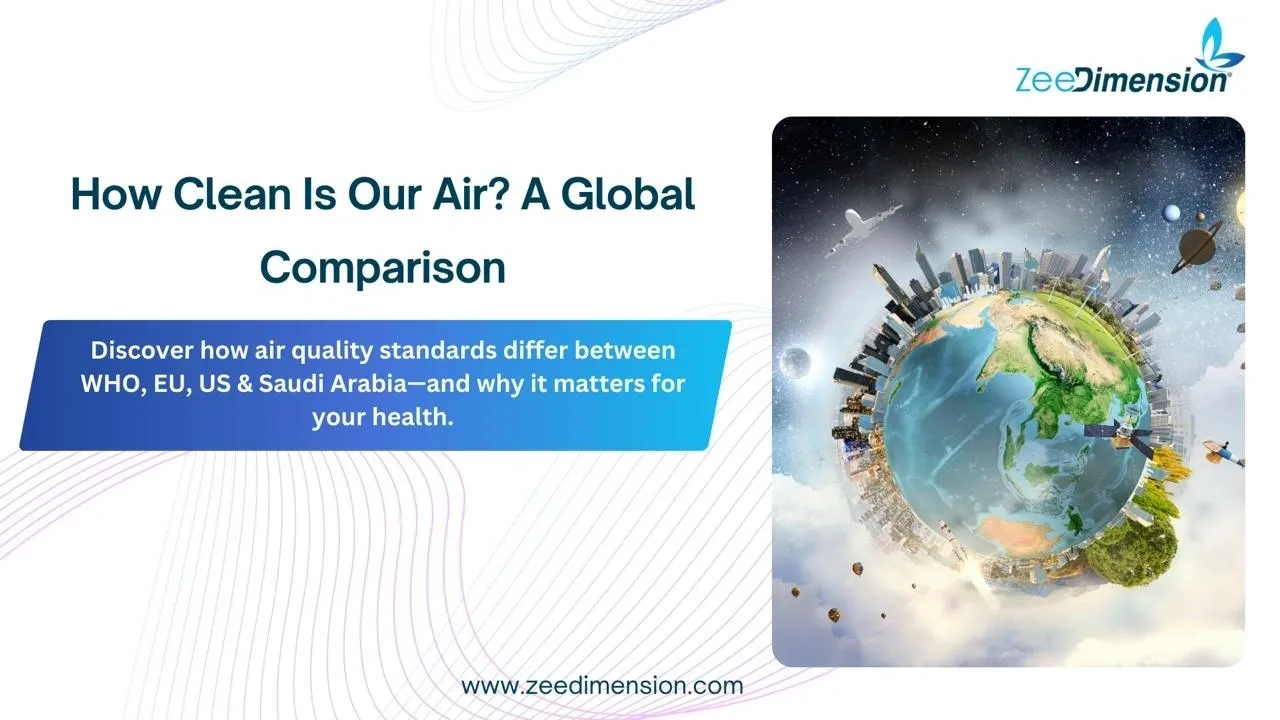
Explore how air quality standards vary across the WHO, EU, US, and Saudi Arabia—and what that means for your health.
What Are Air Quality Standards?
Air quality standards define the safe limits for pollutants in the air. These pollutants can come from traffic, industry, and other sources—and they affect our lungs, heart, and brain.
PM10 & PM2.5 – The Silent Killers
Particulate Matter (PM) is made of tiny particles from vehicle and industrial emissions:
– PM10: ≤10 microns
– PM2.5: ≤2.5 microns (more dangerous)
WHO Limit (PM2.5):
– Annual: 5 µg/m³
– 24Hr: 15 µg/m³
KSA Limit:
– Annual: 15 µg/m³
– 24Hr: 35 µg/m³
The Real Impact of PM Exposure
Long-term exposure to PM can lead to:
– Cardiovascular disease
– Asthma & lung disease
– Increased risk of cancer
Cleaner air = Longer, healthier lives.
Ozone (O₃) – Not Just in the Sky
Ground-level ozone is formed by sunlight + emissions.
WHO Limit: 100 µg/m³ (8Hr average)
KSA Limit: 157 µg/m³
Health Risks:
– Asthma triggers
– Lung function reduction
– Hospital visits
Nitrogen Dioxide (NO₂) – A Traffic Pollutant
Found in high-traffic zones.
WHO Limit:
– Annual: 10 µg/m³
– 1Hr: 200 µg/m³
KSA & US:
– Annual: 100 µg/m³
– 1Hr: 200 µg/m³
Impact:
Irritates lungs & worsens respiratory conditions.
Sulfur Dioxide (SO₂) – A Fossil Fuel Byproduct
Emitted from burning coal & oil.
WHO Limit:
– 24Hr: 40 µg/m³
– 1Hr: 350 µg/m³
KSA:
– 24Hr: 65 µg/m³
– 1Hr: 217 µg/m³
Effects:
Impairs breathing and increases heart risk.
Carbon Monoxide (CO) – Invisible But Deadly
Emitted by vehicles & faulty appliances.
Standard Across WHO, EU, KSA, US:
– 8Hr: 10 mg/m³
– 1Hr: 40 mg/m³
Impact:
Reduces oxygen to the brain, causes dizziness, heart strain—even death.
Are We Doing Enough?
While the WHO sets the toughest air quality standards, the EU plans stricter limits by 2030. Meanwhile, the US and KSA still allow higher pollution levels. It’s time for policies that truly protect our health—not just meet the bare minimum.
Time for Action
Cleaner air begins with cutting emissions, using green energy, improving transport, and raising public awareness. It’s time to act for healthier cities and a safer future for all.







